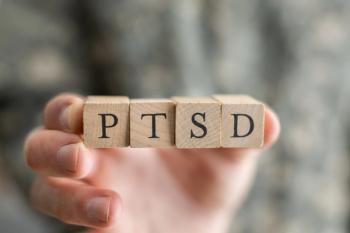
Exploring the Misuse of PTSD Diagnosis
Is PTSD overdiagnosed?
COMMENTARY
In Saving Normal, Allen Frances, MD, astutely reminded us of problems with overdiagnosis.1 Within that trend, it is my opinion that posttraumatic stress disorder (PTSD) is an example. This diagnosis has been a prime example of desire by some to obtain medical validation of their suffering and perhaps, more problematically, justification for crimes committed. In modern society, victimization has gained undue prominence with a diagnosis such as PTSD being an emblematic trophy. This shift comes with significant risks including substandard treatment, worsening symptoms, and misallocated resources. In this article, I focus specifically on the misuse of the PTSD diagnosis in legal contexts where the diagnosis is being increasingly employed as a means to secure more lenient sentencing and even acquittal of crimes. My intent is in part motivated by my deep compassion for individuals with PTSD whose experiences are minimized and spoiled by the misuse of the diagnosis.
Based on the National Epidemiologic Survey on Alcohol and Related Conditions-III (NESAC-III), which surveyed more than 35,000 Americans, 6% were considered to have PTSD.2 I have no reason to believe this number is inflated or incorrect; my critique is based on specific cases I have encountered in my practices, best highlighted by forensic cases. As an example of the ever-increasing use of PTSD to justify behavior and ultimately crime, one may point to the highly mediatized trial of US Senator Bob Menendez. As publicized in the media, US Senator Bob Menendez used the diagnosis of PTSD as part of his defense in his corruption trial. It was explained that somehow his Cuban heritage involving poverty may in part explain his acceptance of gold bars, cash, and a luxury car by foreign governments.3
Trauma is extremely common. PTSD does not prove or endorse past trauma. A 1996 survey of over 2000 individuals from Detroit noted a prevalence of 89.6% of trauma as defined by the more stringent DSM-IV criteria for PTSD, and a mean number of distinct traumatic events of 4.8 in individuals who endorsed any trauma.4 It is erroneous and inaccurate to interpret trauma as consistently resulting in PTSD. If about 90% of Americans have had trauma, but only 6% have PTSD, 84% of Americans have had trauma which did not result in PTSD. Conversely, it is not the practice of psychiatrists, especially clinical psychiatrists, to conduct fact finding endeavors to verify the veracity of the reported trauma.
PTSD is a particularly subjective diagnosis, diminishing the validity of the diagnosis. Despite the a priori expectation that PTSD would be the 1 diagnosis based on actual evidence of trauma, in practice, PTSD is especially subjective. As noted, the vast majority of Americans meet criteria A for trauma. The rest of the diagnostic criteria are often endorsed without objective evidence. In addition to past trauma, PTSD requires the presence of (1) intrusive, (2) avoidance, (3) negative, and (4) altered arousal symptoms. It is common to see evaluations to note such symptoms without any attempt at obtaining objective evidence or worse, the obvious presence of contrary evidence.
- Intrusive symptoms: Do you get sad thoughts about your trauma? While individuals may often endorse flashbacks, intense reminders, and distressing memories, those are rarely noted by others. In my experience, individuals with PTSD are often noted to have severe episodes of distress memories that require them to take time out of their personal lives in their jobs, relationships, etc.
- Avoidance of traumatic stimuli: Do you avoid reminders of trauma? The recent proliferation of trigger warnings gives context to the prevalence of the report of this symptom. In my experience, evidence of full participation in social, occupational, and romantic activities is inconsistent with my understanding of avoidance in PTSD. While PTSD does not require the complete avoidance of all settings, regular attendance to restaurants, concerts, sporting events, vacations does not support this diagnosis.
- Negative alteration: Do you get sad thinking about past trauma? In my experience, many individuals conflate general discontent for the negative alteration of PTSD. While many victims of sexual abuse may find themselves experiencing significant difficulty conceptualizing a future relationship, this is quite different than individuals who blame their past for all of life’s disappointments.
- Alteration in arousal: Are you ever jumpy? Impulsivity is an especially problematic trait as it is so cross-cutting and can apply to so many disorders. When the DSM-5 task force considered creating a trait dimensional system to diagnose personality disorder, impulsivity was 1 of the 5 traits. This is of significant importance, as impulsivity is also a diagnostic feature of antisocial personality disorder and common in substance use disorders, both particularly frequent in the forensic setting.
Ultimately, other than trauma, which is pervasive in modern society, the other symptoms of PTSD are particularly subjective. Hence, in a forensic psychiatry textbook it is noted that “PTSD is based almost entirely on the claimant’s self-report of subjective symptoms.” The textbook astutely recommends for providers to “look for actual evidence.”5
Symptoms of PTSD can easily be faked. In 2001, Burges and McMillian published a study looking at the ability of college students—without prior knowledge of psychology, medicine, or PTSD—to report symptoms of PTSD when asked to complete self-reported surveys.6 The findings were that “94% of participants fulfilled diagnostic criteria,” indicating that most individuals can endorse symptoms of PTSD without any training or coaching. Furthermore, most participants (62%) were savvy enough to not also endorse bogus symptoms of other psychiatric disorders. This suggests that many individuals may be capable of testing positive for PTSD while simultaneously being able to avoid a less deserving label or being assessed as a malingerer.
It is unclear if PTSD is about trauma rather than psychology. In 2024, Baldwin et al authored a meta-analysis encompassing over 15,000 individuals.7 They found that PTSD was more correlative with retrospective measures (memories of traumas) than prospective measures of childhood maltreatment (trauma). The authors concluded that “interpretation of events, conscious remembering, and the associated thought patterns are more strongly linked with psychopathology than the mere events themselves.”8 As has been postulated by providers for many decades, PTSD is often more about the psychology of the individual than the trauma itself.
The gold standard for the diagnosis of PTSD does not solve those problems. One may hope that, considering the problems raised previously, methods have been developed to address them. In research and forensic settings, the CAPS-5 (Clinician-Administered PTSD scale for the DSM-5) is often touted as the gold-standard for the evaluation and diagnosis of PTSD.9 The CAPS-5 follows the DSM guidelines for the diagnosis of PTSD closely and asks about each criterion. Its strength lies in its request for additional details and examples for most criteria; however, the measure does not require the evaluator to pursue or obtain corroborating or contradicting evidence. Instead, to assess validity, the measure asks the evaluator to “estimate the overall validity of responses” based on compliance, the mental status exam, and evidence of exaggerated symptoms. It is thus without surprise that its accuracy “in detecting exaggerated or invalid symptom endorsement has not been demonstrated.”10
While PTSD is a legitimate and serious mental health condition, the increasing tendency to overdiagnose and misuse the label raises significant concerns. The subjective nature of PTSD symptoms, coupled with the pervasive presence of trauma in modern society, makes it challenging to distinguish between genuine cases and those where the diagnosis is sought for secondary gain. This misuse not only undermines the validity of the diagnosis but also detracts from the suffering of individuals who truly experience debilitating PTSD. As clinicians and forensic practitioners, it is imperative to approach each case with a critical eye, ensuring that diagnoses are based on comprehensive assessments and objective evidence wherever possible.
Ultimately, the goal should be to maintain the integrity of PTSD as a diagnosis while providing appropriate support and treatment to those in need. This necessitates a balanced approach that recognizes the real impact of trauma without falling into the trap of misdiagnosis. By adhering to rigorous diagnostic standards and remaining vigilant against potential misuse, we can better serve my patients and uphold the credibility of mental health diagnoses. It is through such diligence and compassion that we can ensure those with genuine PTSD receive the care and validation they deserve, while safeguarding the mental health community from the pitfalls of diagnostic inflation.
Dr Badre is a clinical and forensic psychiatrist in San Diego. He teaches medical education, psychopharmacology, ethics in psychiatry, and correctional care. Dr Badre can be reached at his website,
References
1. Frances A. Saving Normal: An Insider's Revolt Against Out-of-Control Psychiatric Diagnosis, DSM-5, Big Pharma, and the Medicalization of Ordinary Life. Mariner Books; 2014.
2. Goldstein RB, Smith SM, Chou SP, et al.
3. Vincent I. Gold Bar Bob Menendez will claim he hoarded because parents fled Cuba — putting family history on trial. New York Post. May 13, 2024. Accessed August 16, 2024.
4. Breslau N, Kessler RC, Chilcoat HD, et al.
5. Resnik P. Chapter 74. In: Rosner R, Scott C, eds. Principles and Practice of Forensic Psychiatry. Taylor & Francis Group; 2017.
6. Burges C, McMillan TM.
7. Baldwin JR, Coleman O, Francis ER, Danese A.
8. Conscious memories of childhood maltreatment contribute to psychopathology. King’s College London. News release. May 1, 2024. Accessed August 16, 2024.
9. Weathers FW, Blake DD, Schnurr PP, et al. The clinician-administered PTSD scale for DSM-5 (CAPS-5). Accessed August 16, 2024.
10. Matto M, McNiel DE, Binder RL.
Newsletter
Receive trusted psychiatric news, expert analysis, and clinical insights — subscribe today to support your practice and your patients.

















